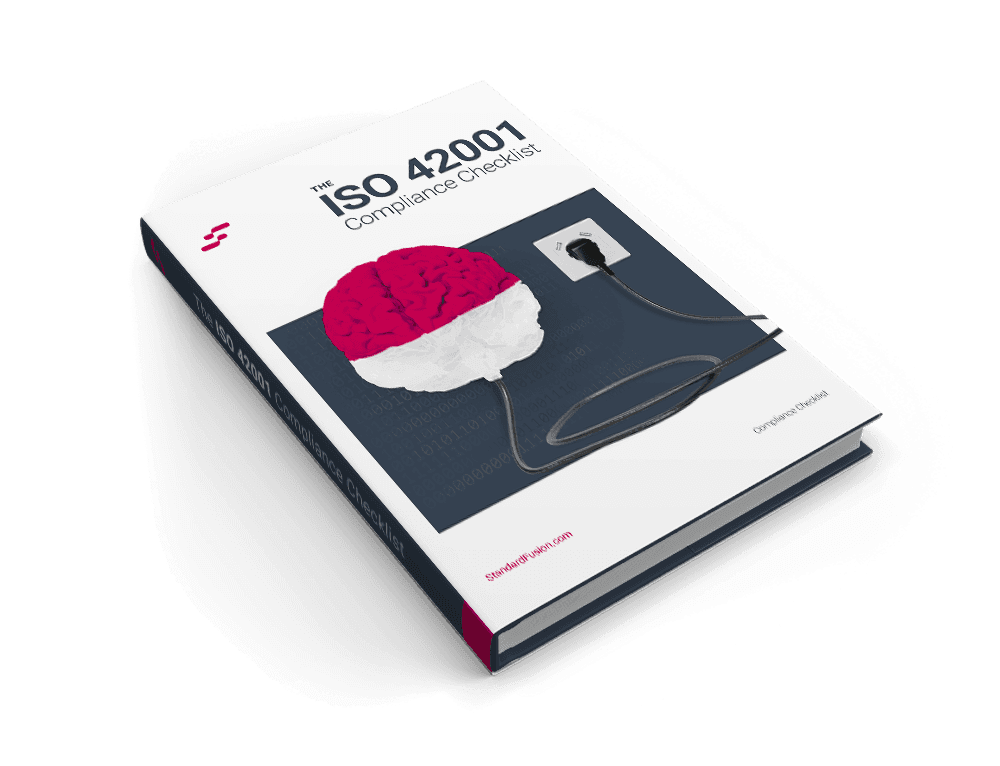Published on: Apr 8, 2025
What is the NIST AI Risk Management Framework (AI RMF)?
Artificial intelligence (AI) is transforming industries, but its adoption comes with risks like bias, security vulnerabilities, and lack of transparency. In July 2024, the NIST AI Risk Management Framework (AI RMF) was released, it provides organizations with structured approach to managing these emerging challenges.
This article explores the NIST AI RMF, outlining its key features, business value, and implementation strategies.
What is the NIST AI RMF?
The National Institute of Standards and Technology (NIST) is a U.S. government agency that develops technical guidelines for cybersecurity and AI standards. To support the responsible development of AI, NIST created the AI Risk Management Framework (AI RMF), helping organizations build trustworthy AI systems that prioritize transparency and accountability while addressing potential risks.
This framework serves the following purposes for organizations:
Provides a structured approach to managing AI risks.
Helps align AI governance with existing cybersecurity and compliance standards.
Mitigates risks related to security vulnerabilities, bias, and privacy concerns.
Enhances AI reliability for organizations and their stakeholders.
Offers a flexible framework that organizations can tailor to their specific needs.
What are the Core Components of NIST AI RMF?
The NIST AI RMF is built on four key elements designed to help organizations manage AI-related risks effectively. These elements provide a structured approach to ensuring AI transparency, accountability, and security while aligning with industry standards.
Govern - Establishing AI Transparency and Accountability
The second core element focuses on developing protocols to handle AI risk elements. Organizations should identify distinct positions and responsibilities in AI governance structures. Every level of AI development requires established accountability systems to promote transparency in decision-making.
Mapping - AI Risk Identification and Assessment Operations
The discovery of AI risks starts with their proper identification before any risk management initiatives. Mapping risks helps organizations identify the planned and unplanned effects of their AI systems' models. Also, organizations can discover any existing biases or potential security risks. It helps identify AI risks that affect their multiple business procedures.
Measure - AI Risk Assessment and Impact Evaluation
Organizations must determine the levels of impact severity following the completion of risk identification tasks. This involves quantifying how well AI systems perform and conducting regular AI risk assessments.
Control - Risk Management Tactics
Once AI risks are identified and assessed, organizations must take steps to mitigate them. This involves implementing risk management controls that align with ethical guidelines, legal requirements, and industry best practices. Continuous monitoring and adaptation are essential to ensure AI systems remain secure, fair, and reliable as technology and regulations evolve.
Why Organizations Should Implement NIST AI RMF
As AI adoption grows, organizations face increasing risks, including bias, security threats, and regulatory challenges. The NIST AI Risk Management Framework helps businesses develop, deploy, and maintain trustworthy AI systems by providing a structured approach to risk management. This helps minimize risks while allowing organizations to use AI technology to continue to help scale their operations.
Enhance AI Trustworthiness and Transparency
The main obstacle preventing businesses from utilizing AI is the lack of confidence in this technology. Businesses, regulators, and consumers worry about bias, unfair decision-making, and a lack of explainability.
The NIST AI RMF helps organizations improve AI trustworthiness by ensuring:
Transparency: Stakeholders can audit and understand AI decision-making processes.
Fairness: AI models are designed to minimize bias and avoid discriminatory outcomes.
Accountability: Clear governance structures ensure responsibility for AI decisions.
By following these principles, organizations can strengthen customer trust, improve regulatory relationships, and gain internal confidence in AI-driven initiatives.
Resolve Bias, Security, and Privacy Dilemmas
Any biases that appear in the data used by AI systems automatically become part of an organization's use of the technology. This can lead to discriminatory outcomes in hiring, lending, and decision-making.
Additionally, AI systems are vulnerable to security threats, including cyberattacks that manipulate model outputs. The AI RMF helps organizations:
Implement fairness criteria to reduce bias in AI models and the development of AI technology.
Strengthen security controls to protect AI systems from cyber threats.
Enhance privacy safeguards to prevent unauthorized access to sensitive data.
Ensure AI Compliance
Regulations worldwide are evolving to ensure AI systems are ethical, transparent, and accountable. Noncompliance can lead to legal penalties, reputational damage, and operational disruptions.
The AI RMF aligns with key regulatory frameworks, including:
The EU AI Act: Defines requirements for high-risk AI applications, especially in finance.
U.S AI Bill of Rights: Establishes guidelines for AI safety, fairness, and privacy.
Industry Specific Regulations: AI compliance for different areas operates under distinct rules per the specific industry, such as healthcare and cybersecurity.
How to Implement NIST AI RMF
Implementing the NIST AI Risk Management Framework (AI RMF) requires a structured approach to integrating AI risk management into an organization’s existing governance, compliance, and security programs.
The following steps outline a practical path to AI RMF adoption:
Step 1: Assess AI Risk and Compliance Landscape
Organizations should begin by evaluating their current AI risk management practices and identifying gaps in compliance with relevant security, privacy, and ethical guidelines.
Key actions include:
Conducting an AI risk assessment using GRC tools to streamline risk evaluation and reporting.
Mapping AI risks to existing compliance and security controls to understand vulnerabilities.
Step 2: Establish AI Governance and Accountability
AI risk management requires collaboration across departments, including risk managers, compliance officers, and AI engineers. Organizations should:
Define clear roles and responsibilities for AI governance.
Implement accountability structures to oversee AI decision-making processes.
Step 3: Implement AI Auditing and Bias Detection
To ensure AI systems remain secure, fair, and explainable, organizations should:
Use AI auditing tools to detect security vulnerabilities and biases in algorithms.
Conduct regular fairness and bias evaluations to prevent discriminatory AI outcomes.
Step 4: Deploy Continuous AI Risk Monitoring
Real-time monitoring helps organizations proactively detect and mitigate AI-related risks. This involves:
Establishing real-time monitoring systems for AI security, compliance, and performance.
Continuously assessing AI models for emerging security threats and operational failures.
Step 5: Strengthen Data Privacy and Security
AI models often process sensitive data, requiring strict privacy and security controls. Organizations should:
Enhance data protection measures to prevent unauthorized access.
Align AI privacy protocols with evolving global regulations.
Step 6: Stay Ahead of Emerging Regulations and Threats
AI regulations and security risks evolve rapidly, making it essential to maintain compliance by:
Adapting AI policies to reflect new regulatory guidelines and security threats.
Monitoring legal developments, such as the EU AI Act and the U.S. AI Bill of Rights.
Step 7: Train Employees on AI Ethics and Compliance
AI risk management is most effective when employees understand the ethical and compliance considerations of AI deployment. Organizations should:
Provide AI ethics and compliance training for all staff.
Offer specialized training for teams responsible for AI development, governance, and security.
By following these steps, organizations can implement the NIST AI RMF effectively, ensuring that AI systems remain transparent, secure, and compliant while minimizing operational risks.
Key Takeaways
Through its systematic structure, NIST AI RMF enables businesses to manage AI risks properly.
NIST AI RMF contains four main parts: Govern, Map, and Measure, and Control.
AI risk management through this framework enables businesses to establish trust through efficient risk assessment systems, decreasing bias and achieving compliance objectives.
The deployment of AI RMF requires users to integrate it within their GRC systems and maintain cybersecurity regulations through strategic risk assessments.
Organizations need to modify the implementation of AI RMF according to their industry business requirements for optimal results.







